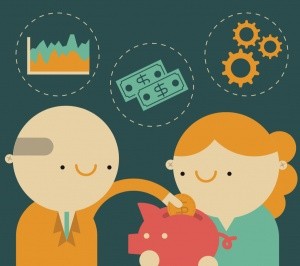Microeconomics Excel models Start the discussion!
New Category!
Thinking of a Best Practice which could fit in this category? Tell us

What is microeconomics?
Microeconomics is the study of the behaviour of an individual or firm in regards to the allocation of resources and their decision-making.
A social science, microeconomics focuses on how scarce resources are allocated and used, how decisions are made and how efficient or productive these decisions are, and shows how different values are assigned to different goods.
In summary, microeconomics can be seen as an investigation into economic tendencies.
What is microeconomics used for?
Microeconomics is largely used to explain the effects that certain changes may have. Microeconomic analysis can benefit a range of areas, including:
Helping to understand the economy: this is because it analyses and presents a free market economy, and details the decisions, actions, and relationships between consumers and producers.
Aid the formulation of economic policy: It is also useful in setting price and taxation policy.
Help business decision-making: microeconomics can help businesses make a number of decisions in areas such as cost analysis, demand analysis, optimal resources utilization, and pricing policy.
Studying human behaviour, such as marginal utility and the indifference curve.
Key Microeconomic concepts:
There are a number of main microeconomic concepts, used and taught widely. Some of these include:
Supply and Demand Equilibrium: This is an economic model aiming to determine the price of a product in a perfectly competitive market. At equilibrium, the market supply and consumer demand are balanced against each other. A more in-depth analysis of the supply and demand equilibrium can be found here.
Production Theory: This is a theory which seeks to explain the way businesses decide the amount of commodity to produce, and therefore what it will need to produce it. Within production theory, businesses will use key economic principles, including evaluating the price of commodities with the price of production. For a more detailed description of microeconomics core concept 'production theory' visit this webpage
Costs of Production: Looking into the costs that are incurred when an organisation produces a good or service, this theory states that prices are determined by production costs.
Labour Economics: The study of the labour wage market, focusing on the labour service suppliers, demand for certain services, and the patterns between these.
Opportunity Costs: This microeconomic theory seeks to analyse the value that has been missed by undergoing one activity rather than another. It is based on the fact that, due to time-constraints, businesses cannot pursue all activities that they would perhaps have wanted to. This theory helps understand what alternative value has been sacrificed.
Market Structure: Another segment of microeconomics involves analysis into the market structure. It looks at different forms of markets, which may represent capitalist or socialist systems, for example. Examples of market structure include commodity markets, insurance markets, bond markets, energy markets, and stock markets.
To find more about microeconomics, and excel models related to the field, find tools below on Eloquens.com. Alternatively for more information, visit this website:



